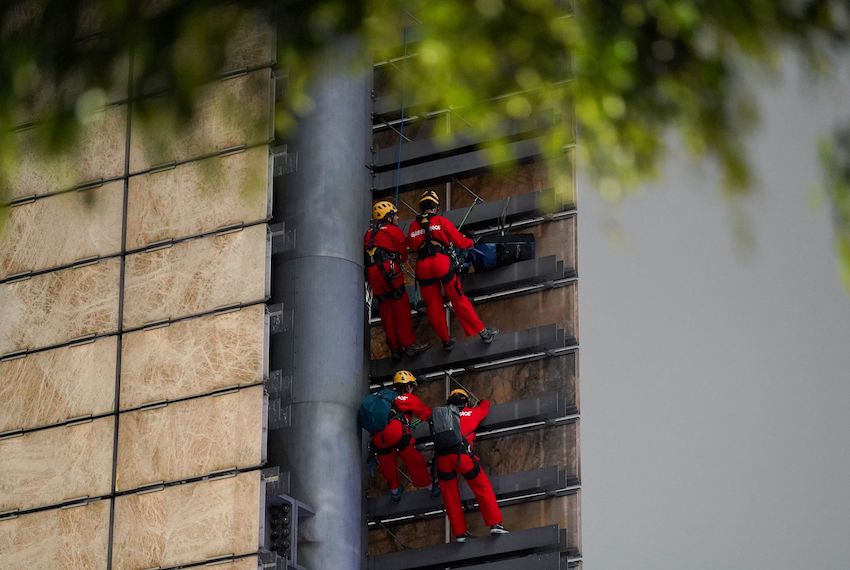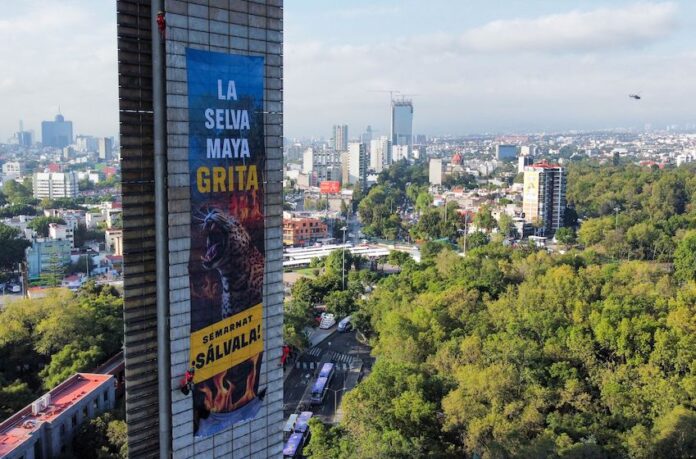Greenpeace activists climbed Mexico City’s Estela de Luz monument on Tuesday morning to bring attention to the destruction of the Maya Rainforest.
A group of protesters unfurled a 27-meter-long, 6-meter-wide banner calling on Mexico’s Environment Ministry (Semarnat) to do more to protect the jungle, a critical ecosystem in southeastern Mexico. The Selva Maya, which expands into northern Guatemala and Belize, is the largest tropical forest in Mesoamerica.

Nine protesters arrived before dawn to scale the monument, reaching a height of approximately 70 meters, whereupon they spread open the banner, which read: The Selva Maya cries out! Semarnat, save it!
Another 20 or so protesters locked arms and formed a barrier around the base of the monument to prevent security from getting to those climbing the monument before the banner could be displayed.
One of the protesters told reporters that their objective was to send a direct message to Semarnat to enhance and enforce policies to protect the ecosystem, insisting that “what happens in the jungle doesn’t stay in the jungle.”
Greenpeace México demanded the government forge “a comprehensive national agreement to protect … the rainforest and its waters for present and future generations.”
The protesters also directed attention to the Greenpeace México website and its “México al grito de ¡Selva!” (“Mexico to the Cry of the Jungle”) campaign, which calls on the public to take action before it is too late.
“From its cenotes and underground rivers — the largest freshwater reserve in Mexico — to its ancient trees and endangered species like the jaguar, tapir and scarlet macaw, the Maya Rainforest is a treasure trove of life that regulates the climate, captures carbon, and sustains entire communities. But it is in grave danger.”
In a press release, Greenpeace México outlined its demands and explained that it timed this protest to roughly coincide with the nation’s Independence Day celebrations.
In demanding that the Mexican government and the states of the Yucatán Peninsula halt deforestation and commit to protecting the Selva Maya, Greenpeace México urged the public to “raise our voices during this patriotic month.”
“May our green, white and red flags blend with the deep green of the jungle, reminding us that freedom is also defended with roots and branches that sustain life,” it said.
Insisting that “deforestation not only destroys trees, it also fragments communities, poisons water and uproots cultures” that have thrived in the region for millennia, Greenpeace also asserted that “thousands of hectares disappear under the advance of megaprojects for tourism, livestock, real estate, agroindustrial and railway development … Places that were once sacred are now commodified, privatized and reduced to the logic of money.”
With reports from El Universal, La Silla Rota and Milenio
